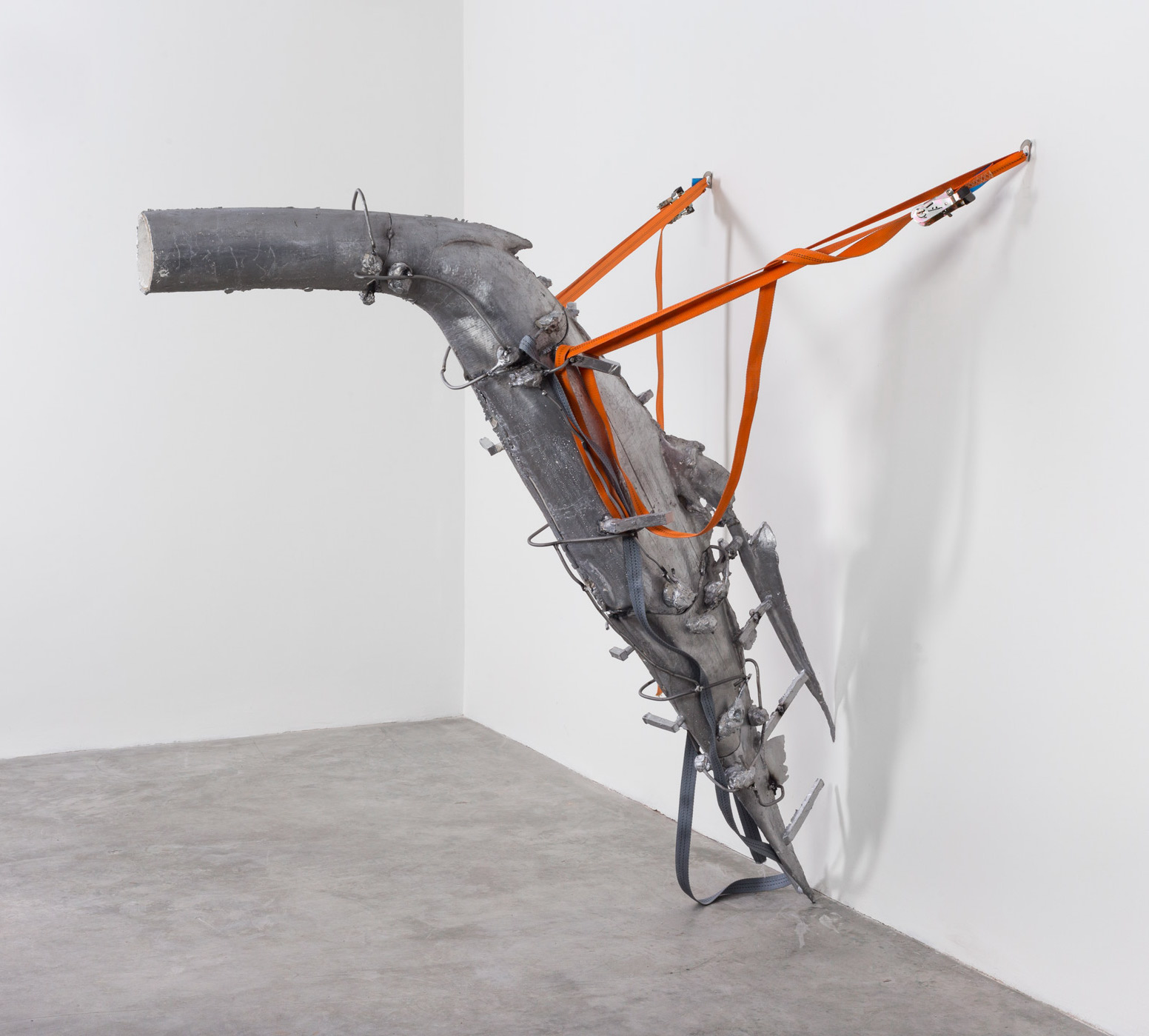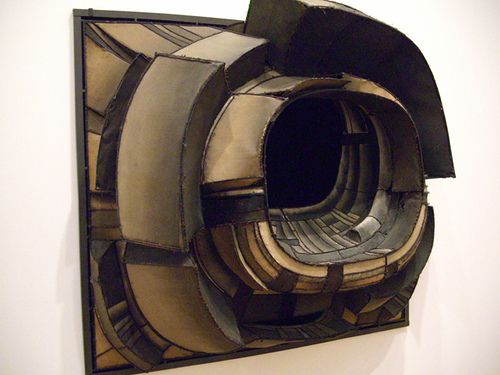McMullen Museum of Art
Permanent Collection
June Crespo (1982–)
VSCHC [Vieron su casa hacerse campo] 6, 2023
Cast aluminum, ceramic coating, and lashing straps
McMullen Museum of Art, Boston College, Gift of Mario Losantos Ucha


Lee Bontecou (1931–2022), Untitled, 1961. MoMA, New York.

Bird of paradise

Robert Morris (1931–2018), installation view of Green Gallery, New York, 1963.
VSCHC 6 takes its name from the title of the exhibition for which this work was made, Vieron su casa hacerse campo (They saw their house turn into fields), held at Museo CA2M in Móstoles, Spain, in 2023. As the title suggests, the sculpture evokes the interplay of contradictions between manmade and natural, domestic and boundless, architectural and formless. At human height, VSCHC 6 evokes a bodily presence. A hole, at face level, reminiscent of American sculptor Lee Bontecou’s wall projections (see image), reveals its hollow core and the remnants of its making through the lost-wax process. To create this piece, Crespo used photogrammetry to stitch together several photographs of a bird of paradise flower (see photo) into a digital 3D model. Employing surrealist tropes of abstracting the familiar, the model was then 3D printed, enlarged, cast in aluminum, and turned upside down, transforming what was once a delicate flower that could fit into one’s palm into a large, industrial, metal corpus.
The inability to immediately identify the original flower creates a critical space for the viewer to cultivate new physical, psychological, and affective associations. The orange and yellow straps fastened to the wall mimic the upright petals of the bird of paradise flower as well as the wings of the bird after which the flower was named. A blue strap down the central column evokes the flower’s smaller interior blue petals. The main flower bract, tapering to a point, hosts a series of protruding sprues, burrs, and cracks, all of which are typically smoothed and polished, but which Crespo chose to retain in order to emphasize the element of chance in the artistic process and to further dissociate it from the flower’s clean lines.
Alive with kinetic energy, VSCHC 6 strains from the wall into the viewer’s space. Referencing a history of sculptural adornment used to enhance architecture, such as relief and carved columns, Crespo’s piece projects too extensively to be considered a relief sculpture, nor does it support the wall. Its reliance on architecture to maintain its verticality denies its sculptural independence as something that one can circumambulate. Rather, like minimalist and conceptual artist Robert Morris’s sculptures that jutted from the walls and ceiling in his 1963 exhibition (see image), VSCHC 6 draws the viewer’s attention to the space and architecture around it, whereby the three become mutually reinforcing.

Rachel Chamberlain
Manager of Education, Outreach & Digital Resources, McMullen Museum